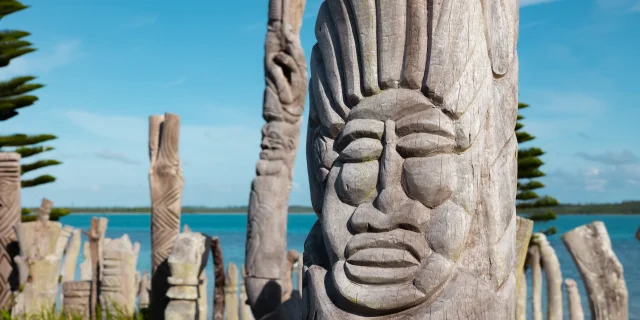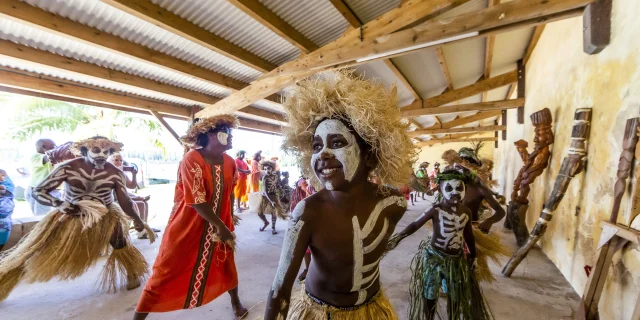At the heart of Kanak culture lies a deep respect for the land, ancestors, and traditions passed down through generations. The Tjibaou Cultural Center in Nouméa is the perfect starting point to immerse yourself in this fascinating world. Designed in harmony with the natural environment and Kanak architecture, the center itself is a work of art, symbolizing the fusion of tradition and modernity. Traditional Kanak huts, with their conical roofs and wooden structures, have been preserved and are still in use by Kanak communities in their tribes.
Music and dance are essential components of Kanak culture, often accompanied by songs that tell the stories of the land, ancestors, and legends. Kanak wood carvings, weavings, and jewelry made from shells or seeds are rich with deep meanings and techniques that have been passed down for centuries.
 Les Chutes De La Madeleine Charlotte Bertonneau 5427
Les Chutes De La Madeleine Charlotte Bertonneau 5427





